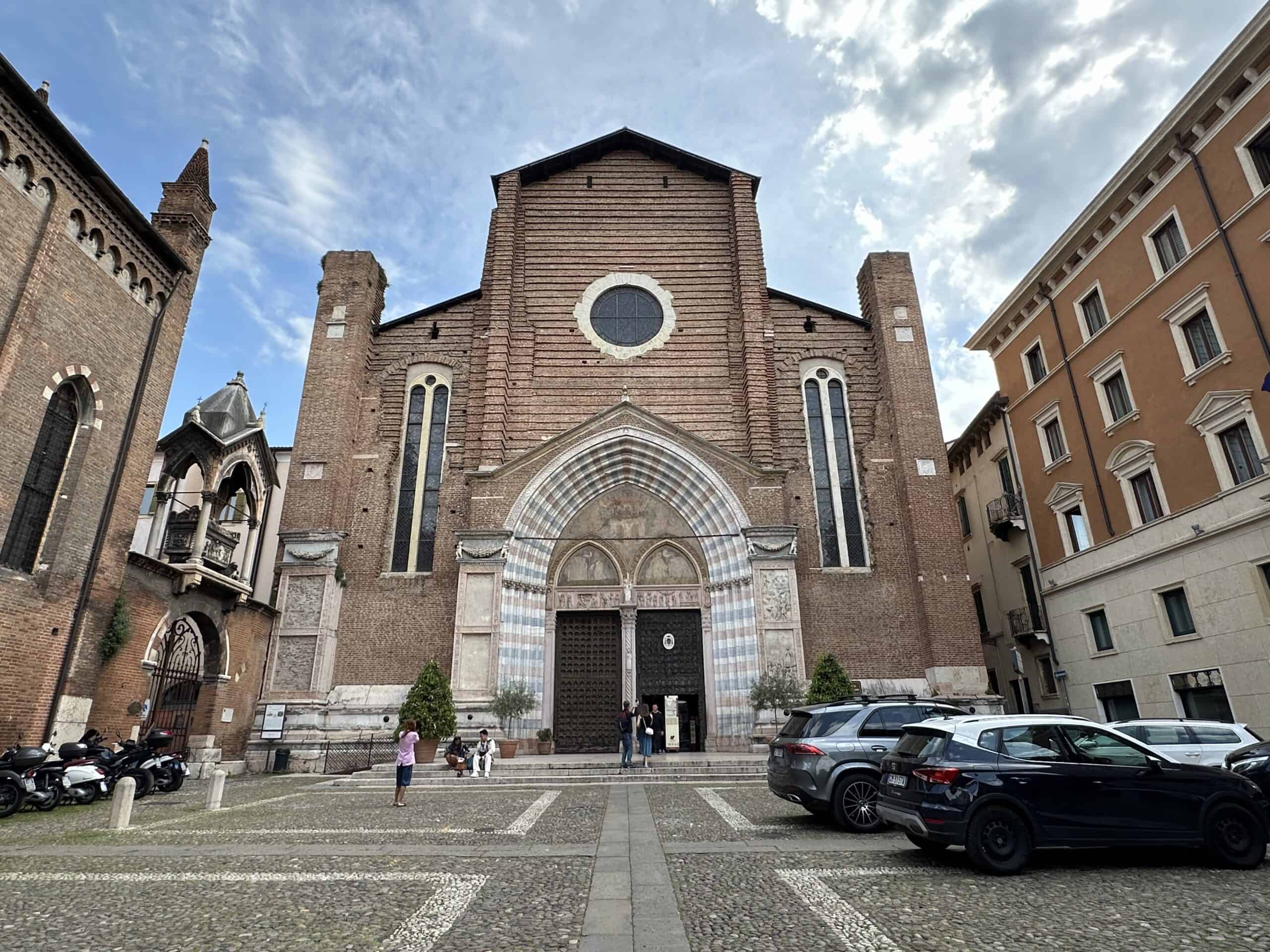
The Basilica of Santa Anastasia is the largest place of worship in Verona.
It stands on the site where, in Roman times, the last stretch of the Via Postumia passed before crossing the Adige River and continuing its route to Aquileia.
The current religious building takes its name from a pre-existing church from the Gothic period, dedicated to Anastasia of Sirmium.
The Basilica is actually dedicated to St. Peter, a martyr assassinated in 1252 and co-patron saint of Verona.
Construction work began in 1290 and continued until its consecration in 1471. The work was made possible thanks to the contribution of the Della Scala Lordship, Lords of Verona, together with other important Veronese families.
On the façade of the Basilica, you can see the division into three sections, with a Gothic door, Renaissance pillars and an upper part without brick cladding.
Interior is divided into three naves joined by cross vaults, with twelve large marble columns with Gothic capitals.
The plan of the church is in the shape of a Latin cross.
The floor is still the original one from 1444 and is of three colors: red Veronese marble alternating with white Istrian and black basanite.
Rather characteristic elements of the church are the two holy water fonts on the sides of the first columns, supported by two hunchbacks.
The side aisles of the church have a sequence of large altars, adorned with altarpieces, frescoes and sculptures ranging from the fourteenth to the eighteenth century.
Among the main works of art are the Fregoso Altar, adorned with an altarpiece depicting the Madonna enthroned with the Child and Saints. The Cavalli Chapel with numerous frescoes from the fourteenth century, including the Virgin Enthroned. The Pellegrini Chapel, decorated with terracotta high reliefs depicting scenes from the life of Jesus.


















